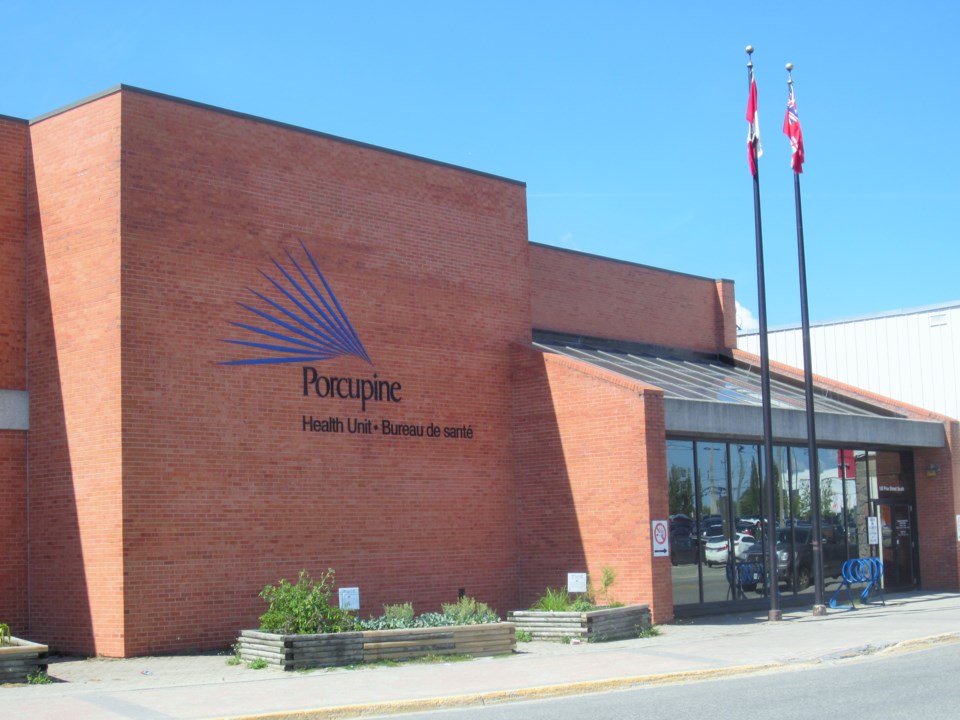Staff and residents at two of the Porcupine Health Unit's (PHU) 10 long-term care homes have been tested for COVID-19, according to medical officer of health Dr. Lianne Catton.
After three days of no new cases in the health unit's region, a new case was announced today. The health unit has also released its second epidemiology report, which shows the Timmins area as having the highest fatality rate and highest percentage of positive tests compared to other health units in Northern Ontario.
The expanded testing for long-term care homes was recently announced by the province. As soon as the testing was announced, Catton said they reached out to the homes immediately. Another five or six local facilities should ready for testing this week, and they are working with the remaining sites to implement the testing.
Arranging the staffing to do the tests, having the swab capacity, and arranging for lab delivery and consultation is a substantial amount of work, she said.
“It is a significant amount of work and the homes and the Porcupine Health Unit team as well the labs have a great job in really connecting quickly and collaboratively to ensure that we’re able to conduct as timely as possible,” she said.
While retirement homes aren't included in the initiative, two homes in Timmins — St. Mary's Gardens and Spruce Hill Lodge — have been tested due to outbreaks
“The retirement homes and other settings, we do expect to have some testing surveillance initiatives announced in the somewhat near future,” she said.
Today, one new confirmed COVID-19 case was reported. It is the 61st positive test of the virus in the health unit region. Of those, 46 are resolved and four people have died. The health unit is following 11 known active cases.
The newest case is a girl between the ages of 10 and 19 who is the contact of a confirmed case.
“The important thing to note is that this person has been in isolation since she was identified as a contact of a case, and thus there are no concerns for potential exposure for others,” said Catton.
With certain businesses re-opening today, Catton said this case is a critical reminder to continue being mindful of public health measures.
People should stay home except for trips for essential items, stay physically distanced from other people when you are outside your home, and wash your hands often.
“We can reduce the number of families, friends and neighbours that may be exposed to COVID-19. We must remain cautious so that any changes to our broader ability to move about within our community does not result in increased spread or exposure for those that may be at greater risk from serious complications from COVID-19,” she said.
It is also Mental Health Week, and Catton is reminding people that it's OK to not feel OK.
“Especially at this point in time, which is so unique compared to anything else many, or almost all of us, have ever lived through,” she said.
While practising physical distancing may leave people feeling lonely, she encourages people to stay connected with family, friends and colleagues.
"Building connections will support and enrich your life, even with the restrictions in place,” she said.
She suggests using video chat, phone, email or text to stay in touch, and give or recieve support.
The health unit has also released its second epidemiology report. It uses known information as of Saturday, May 2.
Compared to other Northern Ontario health units, the Porcupine Health Unit has the highest fatality rate and highest percentage of positive tests. Of the seven deaths in Northern Ontario, four have been in the local health unit’s region.
According the the PHU report, the numbers across the north are:
-
Algoma Public Health, 13 confirmed cases, and no deaths. The tests per 100,000 population are 1,972.4, with a 0.7 per cent being positive.
-
North Bay Parry Sound District Health Unit, 17 confirmed cases and no deaths. The tests per 100,000 are 1,400.9, 1.1 per cent being positive.
-
Northwestern Health Unit, 16 confirmed cases, no deaths. The tests per 100,000 are 2,325.1, with 1.3 per cent being positive.
-
Porcupine Health Unit, 60 positive. There have been four deaths, making the fatality rate 6.7 per cent. The tests per 100,000 population are 2,591.2, with 3.8 per cent being positive.
-
Public Health Sudbury and Districts, 59 confirmed cases. There have been two deaths, with the fatality rate being 3.4 per cent. The tests per 100,000 population is 2,068.9, with 1.7 per cent being positive.
-
Thunder Bay District Health Unit, 74 confirmed cases. One person has died, making the fatality rate 1.4 per cent. The tests per 100,000 population is 2,608.4, with 1.9 per cent being positive.
-
Timiskaming Health Unit, 18 confirmed cases and no deaths. The testing per 100,000 population is 4,283.3, with 1.8 per cent being positive.
For all of Northern Ontario, when the report was completed there were 257 confirmed cases. There have been seven deaths, with the fatality rate being 2.7 per cent. The testing per 100,000 population is 2,219.3, with 1.8 per cent being positive.
Across the province, the at the time of the report there were 17,119 confirmed cases. There has been 1,176 deaths, with a fatality rate of 6.9 per cent. The testing rate per 100,000 population was 2,117, with 5.8 per cent being positive.
The full epidemiology report can be found online here.
Because of the area's low population and case numbers, when the epidemiology reports were announced Catton said it isn't something that can be used to predict risk in particular groups or make broader statements. She noted the percentages and rates can change quickly with very small changes in the number of cases.



